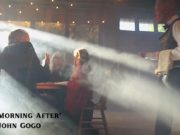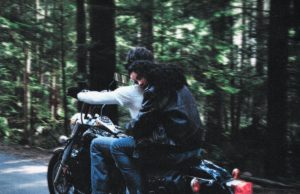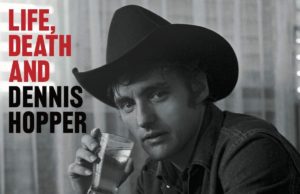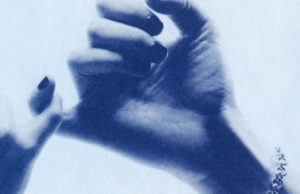 Right at the start of Revolution 1 on The Beatles’ White Album, you briefly hear the voice of engineer Geoff Emerick: “All right, Take 2.”
Right at the start of Revolution 1 on The Beatles’ White Album, you briefly hear the voice of engineer Geoff Emerick: “All right, Take 2.”
The version of the song released on the album is actually Take 20, with several overdubs. This was the first song the band tackled for what would become their legendary 1968 double album. Day 1 in the studio was May 30, 1968. So that’s when “Take 2” was likely uttered. The band must have gone looking for that bit to add to the start of the finished mix, because the final overdubs weren’t added to Take 20 until June 21. It was treated almost like an instrument. I’ve often wondered if Emerick gets royalties for that. I doubt it. Session musicians and studio engineers are typically paid a set fee or rate for their involvement — a one-time thing. In order for Emerick to receive anything extra, he would’ve had to be listed as featured, and he wasn’t. Just like roadie Mal Evans counting out the 24 bars during the orchestral bridge in A Day In The Life.
It got me thinking about other famous studio chatter included on the albums in my record collection — not the musicians, but the control-room personnel. With The Beatles, for example, there are many incidents of the band’s studio chatter being included on final mixes — especially on Let It Be. But they get plenty of spotlight. I’m looking to illuminate engineers and producers. Who are they, what are they saying?
Let’s start with the pseudo title track from Paul McCartney’s sophomore album Ram in 1971. On Feb. 22, 1971 engineer Dixon Van Winkle put a mic on each of Paul’s feet, along with a vocal mic and two more mics on his ukulele to record Ram On. He hit the record button and told McCartney “Take 1” on the talkback, to which Paul quickly replied “’kay” and immediately started strumming. Despite a slight false start, Van Winkle says the main part of the track was captured in one take at A&R Recording in New York.
An earlier example is the 1967 Kinks track David Watts. The opening cut on the album Something Else was recorded Feb. 6, 1967 at Pye #2 Studio, under the supervision of producer Shel Talmy. His two engineers that day were Alan “Mac” McKenzie and Alan “Irish” O’Duffy. The band were augmented in the studio — as they often were — by Nicky Hopkins on piano. Pretty key on David Watts, for sure. Anyway, the song begins with the intercom voice of Mac saying, “This is the master, all right.” To which you hear Ray Davies respond to his bandmates, “Nice and smooth.” Then, you hear a backwards Dave Davies count the song in — “!ruof, eerht, owt, enO”
I’ll mention but discount the classic bit in Van Halen’s Unchained where producer Ted Templeman says, via intercom to the vocal booth, “Come on, Dave — give me a break.” To which David Lee Roth responds “one break, coming UP!” leading perfectly into the next chorus. It’s just too perfect for this cynical old bastard. I say it’s staged.
Far more genuine is another track from the same year — 1981. It’s I Hate Music by The Replacements. The recording begins with the sound of 14-year-old Tommy Stinson hammering away on his bass. Someone says “No! No” — perhaps frontman Paul Westerberg. Right away there is a voice on the Twin/Tone Records studio talkback which reminds the band, “Tape’s rolling.” This Is likely producer/engineer Steven Fjelstad. It’s definitely Westerberg who responds, “Who cares?”
There’s another “Who cares?” example I love from Hüsker Dü‘s 1985 breakthrough album New Day Rising. At the very end of Plans I Make, you hear drummer Grant Hart ask producer Spot if it sounded OK. What he actually asks is, “What did you think?” Spot answers that he thinks “He’s going to be mad because we opened up the trash can.” Guitarist — and vocalist on this track — Bob Mould seems to weigh in in a mocking tone about the bleed coming in, and “Who cares? That’s the last song on the album. It doesn’t matter what it sounds like, anyway.” Blistering is what it sounds like.
The same year as he was the subject of a Led Zeppelin song title, and five years before he would take the lead vocal on Pink Floyd’s Have A Cigar, Roy Harper had a memorable studio-chatter moment. It’s between himself and Tony Visconti — who wasn’t the bass player or the producer of Harper’s 1970 album Flat Baroque and Berserk, but rather was hired to play recorder on the track Tom Tiddler’s Ground. At the beginning of the song, you hear Harper and Visconti chatting and warming up. Harper says, “OK — let’s start this debacle.” He pauses, presumably getting a visual signal from producer Peter Jenner in the control room, and then himself says “Rolling… a joint.” This brings laughter from both Visconti and Jenner, who says something inaudible on the talkback, to which Harper responds — “Well, then you’d better have, Pete, hadn’t you?”
Visconti is also not the producer of David Bowie’s breakthrough fourth studio album Hunky Dory, despite producing his first three. Visconti didn’t get back behind the console again until 1975’s Young Americans — five albums later. The Hunky Dory track Andy Warhol is famous for a few things. First, that its namesake apparently hated it. Second, for Mick Ronson’s great acoustic guitar riff. And third, for the studio chatter between Bowie and producer Ken Scott off the top. It begins with odd electronic noise and then Scott, who says on the talkback, “This is Andy Warhol, and it’s Take 1.” Bowie repeatedly corrects his pronunciation of Warhol before Scott finally, dryly re-introduces the song. Bowie asks if the tape is rolling, and then realizing it has been all along, starts laughing.
A year later, Glyn Johns mistakenly calls Ron Wood “Rod” — captured on tape and kept on the 1971 Faces album, A Nod Is As Good As A Wink… To A Blind Horse. It happens just before the penultimate track on Side 2, Too Bad. “Rod? Ron, I mean. Can you let go of your guitar? I’m getting a little feedback here, sorry.”
A year after that, Led Zeppelin were working with engineer Eddie Kramer, trying to record an acoustic guitar outdoors for a track with the working title Neverending Doubting Woman Blues. They were actually set up to record on a mobile unit in Mick Jagger’s garden at Stargroves. They didn’t use the song on their next album, 1973’s Houses Of The Holy. Renamed Black Country Woman, it didn’t appear until 1975’s Physical Graffiti, and is famous for its intro and the sound of an airplane flying overhead. Presumably this was one of the reasons it was left off Houses Of The Holy. For Physical Graffiti, the band seemed to embrace the plane rather than worry about how to edit it out. It makes for an interesting bit of chatter:
Eddie Kramer: “Should we roll it, Jimmy?”
Eddie Kramer: “We’re rolling on… what, 1?”
Somebody: “No, 1 again.”
Plane and wind chimes can be heard suddenly, causing Robert Plant to laugh.
Eddie Kramer: “Not getting this airplane on.”
Robert Plant: “Nah, leave it, yeah.”
This little exchange was parodied by The Dead Milkmen at the start of their song Methodist Coloring Book, from their 1990 album Metaphysical Graffiti — the cover of which parodies Physical Graffiti.
I’ve read some stuff about the excitement Led Zeppelin enjoyed while recording Physical Graffiti — particularly listening to playback in the control room of Trampled Underfoot. But drummer John Bonham was clearly pretty stoked about In My Time Of Dying as well. At the end of the track, there’s a bit of goofing before you hear Bonham say “That’s going to be the one, isn’t it?” — followed by engineer Andy Johns (younger brother of Glyn) who says, “Come have a listen, then!” Bonham takes his foot off the hi-hat, saying, “Oh yes, thank you!”
The Monkees’ big hit has some classic studio chatter right off the top, even though — like most aspects of the band — it’s entirely fabricated. The Monkees were the first group to make a hit out of Daydream Believer, which was written by John Stewart of The Kingston Trio, whose subsequent solo career lasted 40 years, nearly 50 albums and 600 songs — although none as big as this one. Stewart had trouble selling bands on the song, which he wrote in bed after a lazy, unproductive day. Two acts passed on it, and even when The Monkees originally recorded it in 1967, it was left off of Pisces Aquarius Capricorn & Jones and used instead of The Birds, The Bees & The Monkees — tagged to be the B-side of Love Is Only Sleeping. It begins with Davy Jones being told by producer Chip Douglas that this is Take 7A. Jones seems to not hear him and asks what take this is — but the other Monkees respond in mock-exasperated union “7A.” Jones responds that they’re picking on him for being short. Supposedly, Jones was not in a good mood when the final take was recorded, because it took quite a few to get it right. You might be able to hear a slight edge to his vocal.
Legendary engineer and psychedelic pioneer Gary Kellgren was among the first to start using phasing and flanging effects in the studio. He co-founded The Record Plant in New York City in 1967 but was a familiar face at the two other prominent N.Y.C. studios: Mayfair and Apostolic. It was at those two that Frank Zappa & The Mothers Of Invention recorded their third album We’re Only In It For The Money. Kellgren features prominently throughout, not just as a creative engineer, but also for his spoken-word bits from into studio mics while Zappa was listening from the control room — one of which was censored from some pressings of the album. The record opens with Are You Hung Up?, which features dialog by Eric Clapton, following which we get the first taste of Kellgren’s so-called creepy whispering. He says, “One of these days I am going to erase all the tape in the world. In the world… world. Tomorrow I may do it. All the Frank Zappa masters… nothing… blank… empty… space. That’s what they are now… blank… empty… space. Oh, I know he’s sitting in there, in the control room now, listening to everything I say, but I really don’t care. Hello, Frank Zappa!”
The next one happens in the middle of a song, two tracks later. Before the second chorus of Concentration Moon, Kellgren’s creepy talkback voice says, “Tomorrow I get to do another Frank Zappa creation, and the day after that… and the day after that…” This is the same song where a section of Kellgren’s talking was censored-out of many editions. The Rykodisc copy I had still included it, though. It has Kellgren saying, “The Velvet Underground, who are as shitty a group as Frank Zappa’s group.” Before the last song on Side 1, Hot Poop, we hear Kellgren again — “He is working the controls because all producers love to turn knobs. They think it is the way they can create. I wonder what everyone else is whispering about.”
In the middle of the second side, just before Lonely Little Girl, Kellgren says, “Right now I have two hit records on the charts, but it has not made me any money. It has only brought me fame and glory, and a lot of work. Which I don’t really care to tell.” I was trying to figure out which records he was talking about. His parts were recorded between July and October 1967. I’m guessing the debut album by The Velvet Underground and the other might be the single San Franciscan Nights by Eric Burdon & The Animals.
On Yes’s 1972 album Close To The Edge, you hear a brief exchange between guitarist Steve Howe and an engineer at the very start of You & I. The engineer says “We’re rolling,” to which Howe — louder, because he’s mic’d — says “OK!”
Finally, one that’s always troubled me — the fumbling chat and false starts on both Feel and If It’s In You from Syd Barrett‘s debut solo album, 1970’s The Madcap Laughs. These two tracks are from the final recording session for the album, produced by Barrett’s former Pink Floyd bandmates David Gilmour and Roger Waters on July 26, 1969. Earlier sessions were produced by Peter Jenner (May, June & July 1968) and Malcolm Jones (April & May 1969). Gilmour and Waters were onboard to get the project done — and succeeded with intermittent recording in July and August 1969. At the beginning of Feel, we hear Gilmour come over the talkback to say, “Feel: Take 1.” Syd begins the unaccompanied song 10 seconds later and finishes — after an obvious edit — by telling the booth, “That last one was Diamond, actually” referring to the track which gets called Feel anyway. Why this snippet is left in is a mystery. But it gets rougher, still, as the awkwardness continues into If It’s In You. The song begins tentatively, has a false start and then a second false start when Barrett fails to hit the right note — something which, despite his many problems, was apparently uncommon for him. Yet, it gets left in for the final mix.
After missing the note and stopping, we hear Gilmour say, “Six” to indicate that it was Take 5 and they were starting over. We can make out the voice of Waters, probably in Barrett’s headphones, suggesting Syd tune down his guitar. Barrett is having none of it and says, “No, it’s just the fact of going through it. If we could just cut…” There’s another obvious edit and we hear Barrett clear his throat and begin again — managing to get all the way through, but with shaky timing. It’s too fast and he messes up a few times. It’s awful and including this on an important first solo album that took nearly two years to complete shows bad judgment, at best. There’s no mistaking this for some sort of endearing vulnerability. Why this track was included on the album, and not Opel (recorded in April 1969 by Malcolm Jones), is absolutely baffling. Almost seems like sabotage, masquerading as some sort of “musique vérité.” Like they wanted everyone to know just how difficult it was working with Barrett. I suppose this helps justify Jenner and Jones’ decisions to abandon the project, and Gilmour and Waters’ more public decision to turf him from Pink Floyd.
Anyway, it’s gross and I hate it. There’s none of that on the followup album, Barrett, produced by Gilmour and Floyd keyboardist Richard Wright. This makes me think Waters was the one who was fine with presenting Barrett this way.
As Syd himself said in his final Pink Floyd track:
“It’s awfully considerate of you to think of me here
And I’m most obliged to you for making it clear
That I’m not here.”
• • •
Area Resident is an Ottawa-based journalist, recording artist, music collector and re-seller. Hear (and buy) his music on Bandcamp, email him HERE, follow him on Instagram and check him out on Discogs.









































